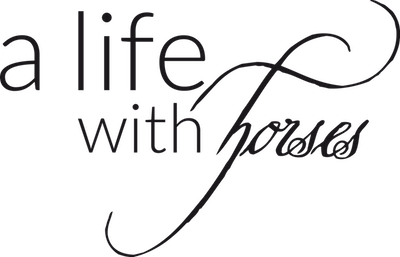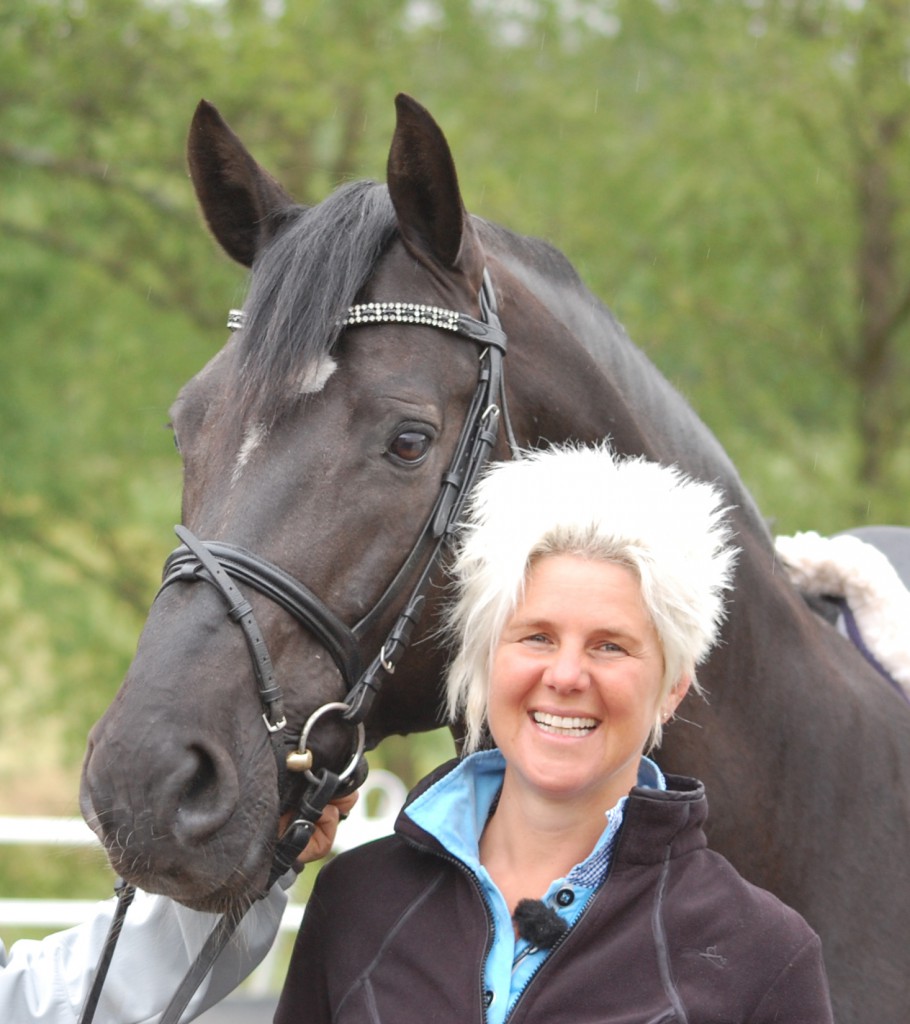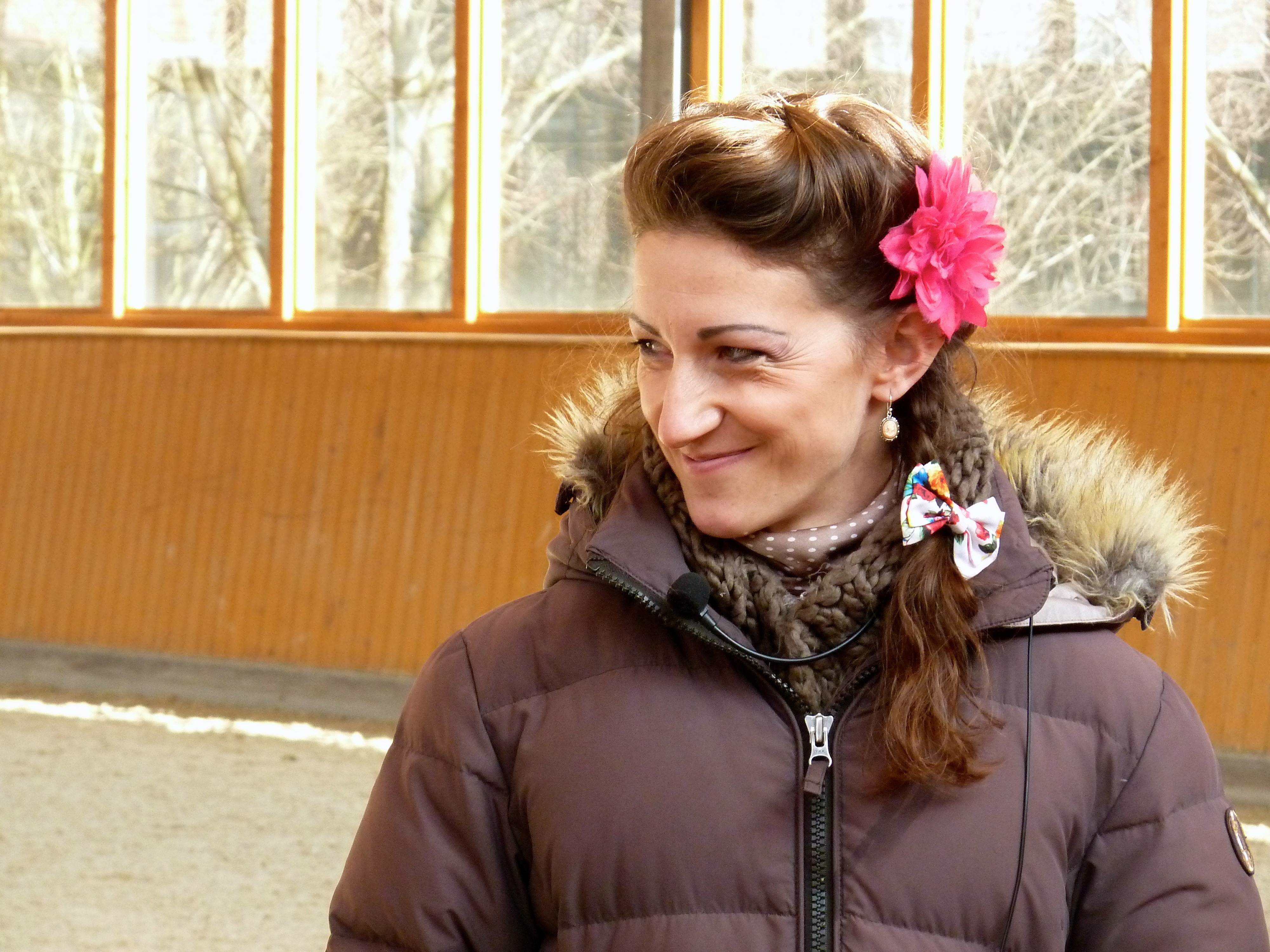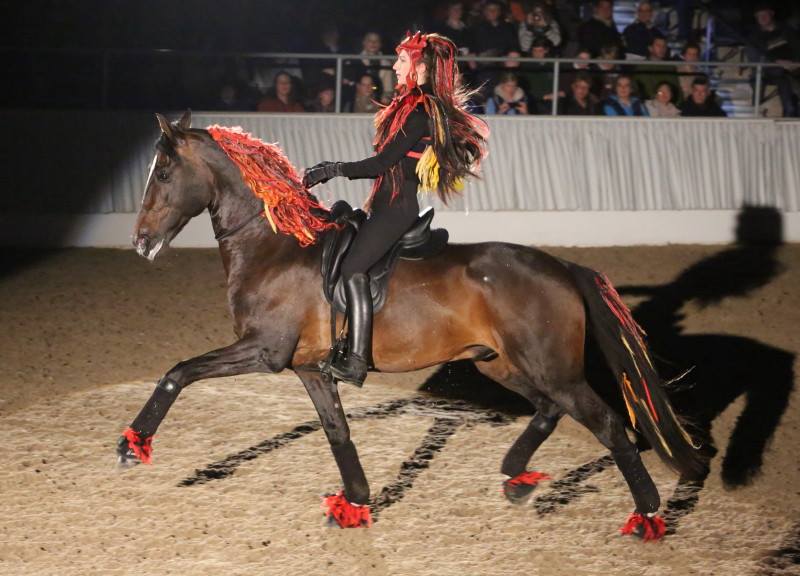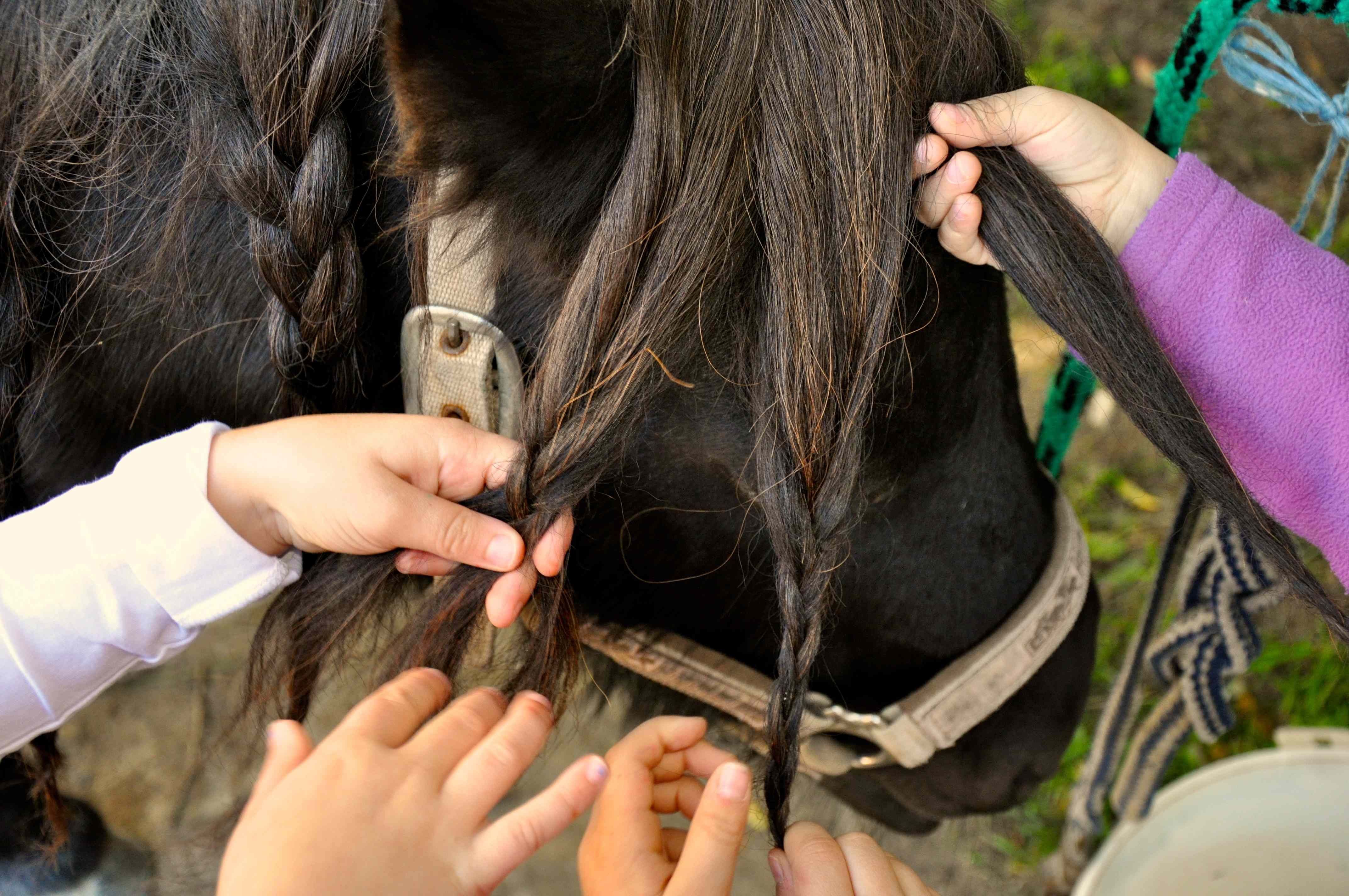
Foal night. (Just delivered, there are still hay-nets in the stall. They are very dangerous for foals and definitely have no place in a stall for foals, nor in a foaling stall!)
Breeding, buying a weaned foal, buying an untrained horse – my old girl is getting on in years and I often find myself pondering about these options. I am clear about taking on the training myself, and equally clear about all the advantages and disadvantages of the different constellations. So it’s a battle between head and heart. This is why I thought it so refreshing when a fellow rider told me about her two-year-old during a trail ride a few days ago; with almost a sigh she exclaimed from the bottom of her heart: “A foal of one’s own is the most beautiful thing!” In this context you need to know that she is not a dreamer. She picked a very good surrogate mare. She is somebody who knows the scene, who can judge horses, who knows her numbers. All in all pretty rational. And this is exactly why I liked it: there was sooo much longing in her sentence.
Question is: how do the pros do this? Choosing their youngsters? I am always over the moon when I can ask people these things thanks to my job, people who are really in the know. So: here they are, the answers of professionals in the areas of dressage, jumping, eventing and the Icelandic horse sport.
How to identify a good horse
Well, this is how it can go: Icelandic horse trainer Rosl Rößner was supposed to put a price tag on a breeder’s herd of young horses. She did the ground work with the young horses for three days. She fell in love with one of them herself, one that had a particularly strong character and a great presence. „Foolishly I had quoted the breeder a pretty high price for the horse, he himself had estimated the young mare at a lower price,” she says and to this day thinks this is funny. But she was already won over and she bought the two-year-old herself. She has never regretted the purchase: „She wasn’t a simple horse, but she was impressive. The mare became German champion and is a superb sport horse,” the trainer says. This predisposition for gait is something she likes to see in young horses when running loose, “at least a few steps of Toelt in transitions”. It would be important especially for recreational riders: “He’d be on the safe side and training wouldn’t take forever, until the horse knows the Toelt!”
British dressage star Carl Hester pays special attention to a good hindleg:
„People who buy a good dressage horse are above all looking for a good pair of hindlegs”
the professional rider told in an interview with British magazine Horse&Rider. One should pay much less heed to the trot everyone always focusses on so much: “Walking and cantering are things you can buy as predispositions. Only the trot can be developed in training.” The Brit, who turned the two top horses Valegro and Uthopia into what they are now, likes buying two-year-olds. At this point in time good quality is still really affordable and you can’t be sure whether the horses will participate in a Grand Prix sometime in the future, even if you buy four-year-olds.
With his jumping horses Toni Hassmann also watches out for “three good basic gaits, that’s half the battle in having them jump well!” It is important to him to feel what it’s like to jump the horse when in the saddle: “Often you can feel the potential better in the saddle than you are able to see it from above.”
Getting it right the second time around
Sometimes even professionals need a second chance to see true potential. Cotopaxi is the horse in Toni Hassmann’s stable he predicts the biggest career for. However, when he rode him for the first time, as one of three horses for sale, he did not choose him, but bought a different horse. The lady who later bought Cotopaxi put him up in Toni Hassmann’s stable later. Yet he only discovered Cotopaxi’s hidden potential during the first tournament: “That’s where it felt as if he had flipped a switch. Much sharper and very different with regard of the jumping sequence!”
The fact that a horse presents a whole lot differently at a tournament than at home is something national jumping trainer of the juniors and young riders Lars Meyer zu Bexten has also experienced: „You notice with the really very good horses that they crank it up by another ten, twenty percent during a tournament.” Their true talent often shows at the age of eight, nine years, when horses are introduced to three-star tests and the horse’s true attitude surfaces. Eventing rider Andreas Ostholt is of a similar opinion: „Whether a horse can and wants to do the utmost will only be noticeable once he has arrived at that point.”
Lars Meyer zu Bexten prefers to buy horses that are well into their fifth year. „In earlier days I bought very young horses only selected by their ability to loose jump; I don’t do that anymore,” he says. „That’s when you buy a piece of hope at the same time.” He wants to see at least a few small jumps under a rider. As unfortunately experience taught him that good loose jumping is no guarantee for good jumping under a rider. He watches out for rideability – because in case quality does not suffice for making it to the top after all, the offspring should at least become a good riding horse in the amateur field.
Andreas Ostholt shares an example of how it can be the right thing to believe in a horse: „Lady Lemon FRH was my first successful horse: she was supposed to go back to the breeder due to being unfit for sports. I saw her several times under different riders. Eel-like, shaky, but there was something. I was simply attracted to her. I can’t quite describe it, it was just an intuition. She truly gave her all for me and we both thrived together.”
A full tank
Eventing horses, more importantly than sporting horses, should have a good portion of thoroughbred in their documents. And eventing pro Andreas Ostholt watches out for this portion in the documents, but even before that in the looks: “I favor a degree of thoroughbred from either side, ideally 50%. Type is important for amateurs and youths. For seniors both things then count. Horses can look like true thoroughbreds, but when the documents show a lack of the actual blood line the tank is empty all of a sudden after ten or eleven minutes despite intensive training.” Additionally he also watches out for clear eyes and the willingness to work:
„I don’t mind a difficult horse, and I also don’t mind taking a mare. A smart horse by your side will stick with you come hell or high water.”
Correct leg positioning, movement and ability to jump are, of course, another given. He checks the degree of courage, something an eventing horse absolutely needs, by closely observing the horse when it encounters new situations, such as moving in unknown territory, when allowed to run loose or with unfamiliar jumps.
And what about charakter?
All professionals emphasize how important the young horse’s right attitude is to them. Carl Hester told British magazine Horse&Rider that, above all, he looks out for the right mix of temperament: “I want a hint of thoroughbred, a little alertness and eagerness without the craziness.”
Icelandic horses need some neck!
Icelandic horse trainer Rosl Rößner recommends attaching particular importance to three things when purchasing young Icelandic horses: a good upper neck line, a lot of natural Toelt and paying attention to the fact that the horse does not have a tendency to be in a disunited canter. “The good upper neck line ensures to an extent that later on the horse will not try and use the lower neck to push away the back”, the trainer says. “When running loose the horse is supposed to display as little disunited canter as possible, as oftentimes this is a sign in gaited horses that you will run into trouble when trotting, because the coordination between forehand and hindquarters is lacking in harmony.”
Golf instead of Ferrari
One more warning from the professional eventing rider: amateurs and younger riders need simple and reliable horses, “however, all too often people look for a three-star horse, which is only supposed to L gehen in the beginning”, says Andreas Ostholt. „ Usually three-star horses like to be challenged much more than these riders are able to do. So first drive a well-equipped golf that is easy to handle and then switch to a different model. If I can and wish to go at only 80 miles per hour I shouldn’t buy a Ferrari, even if I can afford one…”
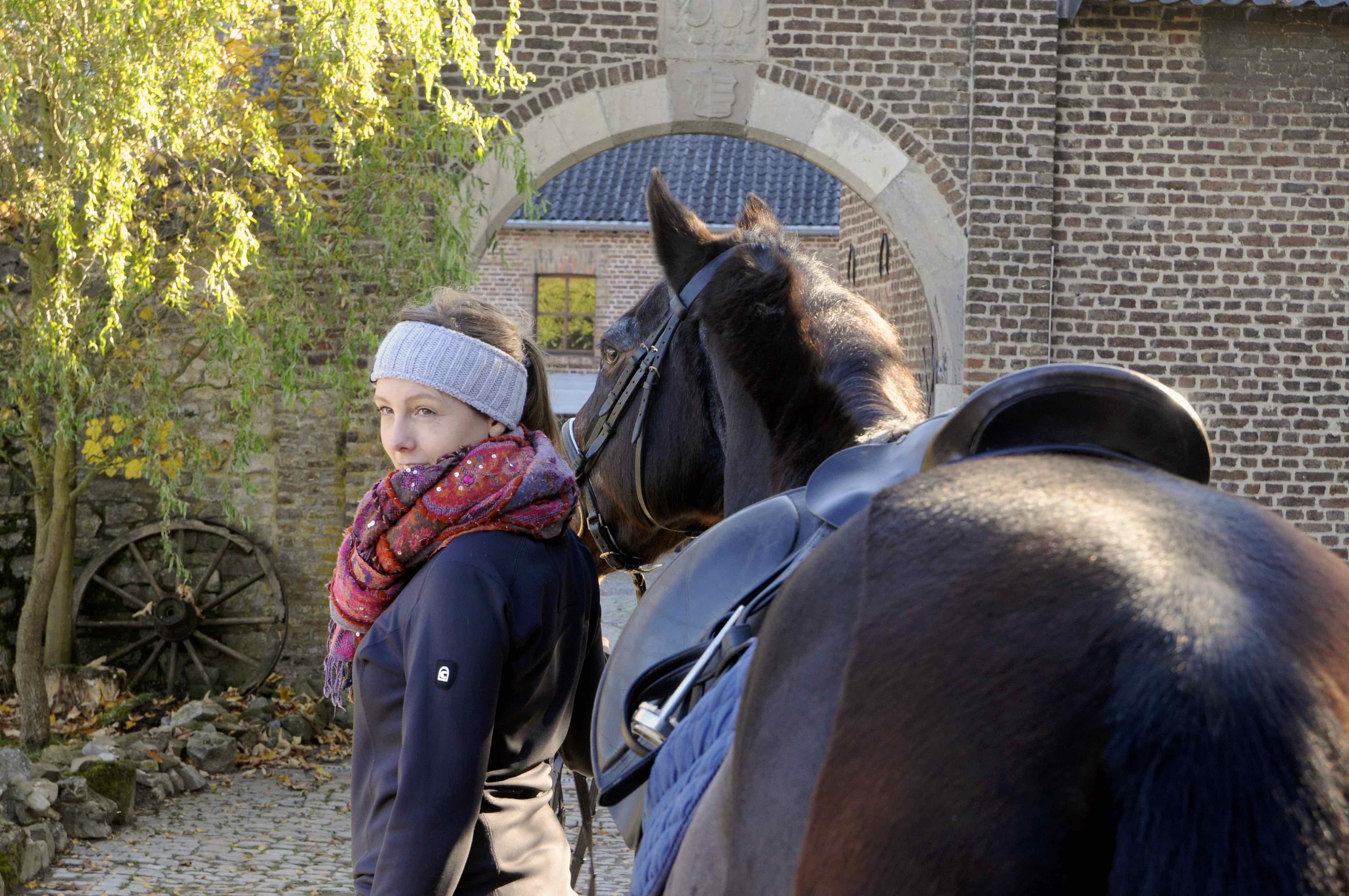 Sometimes ideas float through space and settle in different minds at the same time. This makes something happen, people start talking about it, and impressions, thoughts become topics of discussion, awareness is created and a new reality is established.
Sometimes ideas float through space and settle in different minds at the same time. This makes something happen, people start talking about it, and impressions, thoughts become topics of discussion, awareness is created and a new reality is established.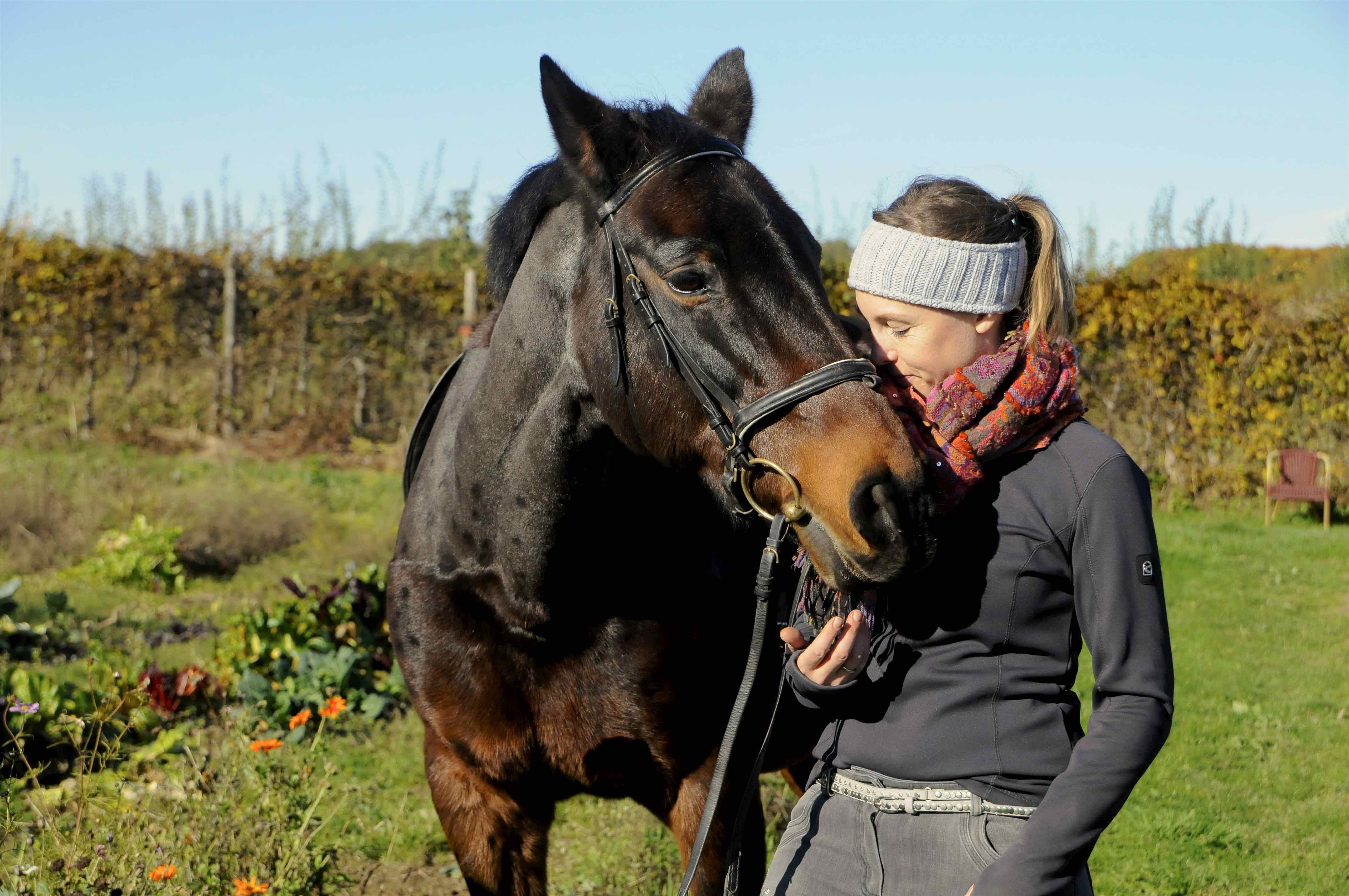 I do not allow myself to be goverened by negative thoughts with the result that I do not even notice anymore what my horse is up to beneath me.
I do not allow myself to be goverened by negative thoughts with the result that I do not even notice anymore what my horse is up to beneath me.